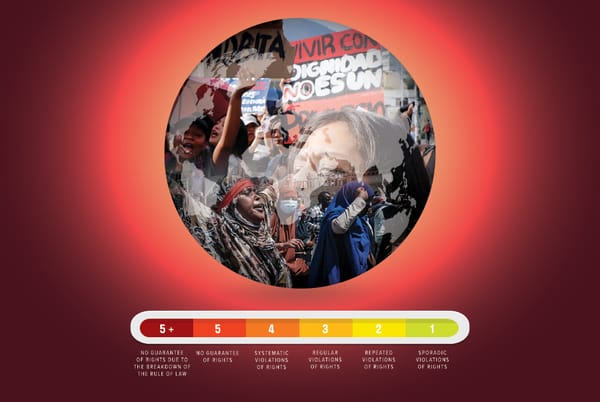
Between 2015 and 2019, the government of Iceland and the Reykjavik City Council undertook an employment experiment, allowing a sample of workers access to a shorter work week without any loss of pay. The results are now in, and over the past week or so the study’s findings have garnered significant media attention. Many are declaring the Icelandic pilot “an overwhelming success,” reporting that workers experienced greater work-life balance, reduced stress and more free time with family.
The Icelandic study fits in with a series of similar trials studying working time reductions undertaken by large companies, municipal governments and other public sector workplaces. These various studies — along with policy advocacy from groups such as the United Kingdom-based think tank Autonomy, which compiled data and released a report for the Icelandic pilot — indicate a renewed interest in lessening the social burden of paid employment.
Such concerns about manageable working time, or “work-life balance,” will likely continue to grow, particularly with the spread of remote working during the COVID-19 pandemic, which in many cases increased working hours and blurred the lines between work and home life.
As some have pointed out, however, the headlines about Iceland have been somewhat exaggerated. For one, the two pilots didn’t introduce a “four-day work week” for all Icelandic workers participating in the study, as many media outlets have been claiming. Rather, the more than 2,500 workers saw their average work weeks reduced from 40 to 35 or 36 hours. These hours could be spread over four days or not; the point of the trials was to study working time reductions, not necessarily a four-day week. (On this, the pilot is not terribly novel: recall that France introduced a 35-hour work week in 2000).
Additionally, although public sector trade unions in Iceland are engaged in collective bargaining to make hours reduction a permanent feature of working life, the total amount of free time workers are set to gain is modest. This could be as little as a half-hour or less per week, depending on the public sector workplace.
Nevertheless, the report indicates that the pilot work reductions were very popular. As a result, unions in Iceland hope to use the Icelandic government’s role as a large employer to reshape the conditions of the broader labour market. My own collaborative research on the role of the Canadian federal government as a ‘model employer’ shows that there is evidence for such a relationship between national public sector regulations and the overall conditions of the labour market.
There is much we can learn from working time reduction experiments like Iceland’s. However, I also have some notes of caution.
Insofar as pilot projects like Iceland’s garner positive media attention and help to reshape the discourse around work and leisure, they are a net benefit. However, I’m also skeptical about both their long-term political effect and their feasibility outside of narrow, protected segments of the labour market. There’s a serious risk of misreading these types of studies and failing to place them within their political context.
Let’s start with the fact that the pilot took place in Iceland, where, despite the right-wing Independence Party having the most seats in parliament, the Left-Green Movement retains the position of prime minister (currently held by Katrín Jakobsdóttir) and sits in a coalition government where both the Progressive Party and Social Democrats have influence.
It’s also noteworthy that Iceland already has some of the lowest hours of work among Organisation for Economic Co-operation and Development (OECD) countries. In 2020, workers in Iceland put in an average of 1,435 hours. Canadians, by contrast, worked 1,644 hours on average. That’s a difference of 209 hours over the course of a year, which works out to a little more than five extra weeks off.
Part of the problem with the framing of studies like the one just conducted in Iceland is that they take the “work week” as the unit of measurement, rather than total hours over a year. Icelandic (and other Nordic) workers work lower yearly hours because they have much greater access to paid time-off in the form of holidays, vacations and other leaves that significantly reduce their total working time. Moreover, lower yearly working hours and greater paid time off are directly related to Iceland’s suite of social welfare policies, such as extended parental leaves and universal public child care, which make it easier to balance work and life.
This brings us to perhaps the most important thing to consider: the state of Iceland’s labour market — as well as the design and implementation of this most recent pilot study — is the result of the country’s strong labour movement. In other words, the trial was not simply the product of an enlightened government. Icelandic trade unions and civil society groups have long been pushing for such work time reductions, and were instrumental in the rollout of the study.
The strength and influence of the Icelandic labour movement is further institutionally buttressed by a sectoral bargaining system that allows unions to negotiate contracts covering whole industries. As a result, union density in Iceland is a whopping 92.2 per cent, giving the country the highest rate of union membership in OECD states.
Without question, the national power of labour in Iceland shaped the design of the work reduction study, as well as the ability of unions to make some of the pilot’s findings permanent through sectoral collective agreements.
Finally, we should also note that participants in the Icelandic study were drawn entirely from the public sector, including workers in health care, education and social services. This is especially interesting because Iceland doesn’t have a particularly large share of public sector employment compared to other OECD countries. Indeed, public sector wages often lag behind those in the private sector — owing to the way sectoral bargaining increases the strength of unions representing private sector employees, as well as Icelandic workers’ propensity to strike.
Public sector workers do, however, occupy a unique place in the labour market owing to their relative protection from market competition. Allowing more than 2,500 unionized, public sector workers to reduce their hours, therefore, is a much different undertaking than creating universal working time reductions covering the various conditions in which private sector workers find themselves.
In the private sector, in particular, working time reductions run into the same challenges as any other worker-friendly reform: employers in labour-intensive sectors of the economy, where wages tend to be low and profit margins are tight, will fight tooth and nail against them. Outside of a country like Iceland with near total union coverage, such a policy intervention is nearly unthinkable.
Low wage employers in North America have actually been increasing the rate of exploitation.
As Kim Moody demonstrates in On New Terrain, the past decades have been characterized by the intensification of working time, principally in the form of bosses pushing for ever greater levels of output. Employers in manufacturing and services seek to maximize every second of production. For example, Amazon’s “time off task” measurement tracks all points in a shift where workers aren’t engaged in “production” (sorting, picking or packaging items in warehouses).
Bosses employing these increasingly sophisticated forms of technological surveillance and speed-up seek to extract as much value as possible in a given work day, which also includes lengthening the working day in occupations where labour intensity is high and the options for introducing labour-saving technology are scant. As Karl Marx recognized, the battle over the length of the working day remains a fundamental terrain of class struggle under capitalism.
For a graphic depiction of what this looks like in practice, More Perfect Union just released a video about striking workers at Frito-Lay in Topeka, Kansas, where union members commonly work 12-hour shifts with only eight hours of rest between. The union refers to these as “suicide shifts,” and argues that forced overtime has in fact led to workers committing suicide.
Moreover, deregulation of labour markets throughout North America have caused simultaneous under-employment for some and overwork for others.
For example, the growth of involuntary part-time work beginning the 1990s in Canada has forced many workers into jobs without reliable hours, which in turn contributes to a rise in multiple-job holding in order to secure adequate income. These trends around irregular hours and involuntary part-time work disproportionately harm working women because they still perform the vast majority of unpaid caring work in the home ,and therefore must balance the demands of paid employment and family responsibilities.
These various forms of labour market insecurity in North America make it quite difficult to imagine a policy of working time reduction on the order of the Icelandic model. In fact, many workers struggling with low wages, irregular hours and a lack of union representation, might resist such a policy, fearing the negative consequences it could have on their material well-being.
Without due attention to the often vast disparities of wages and working conditions across the working class, policies such as working time reduction or other forms of “flex-work” risk being nothing more than the purview of a relatively secure and protected professional strata of salaried employees.
Treating the Icelandic pilot project as a demonstration of a single policy that can be transplanted into any social or political context is naive at best. In all likelihood, a four-day week or some other method of weekly hours reduction will only be considered by public employers where unions are strong or workers are sufficiently isolated from market pressures and competition. We might find a few other private sector firms with highly skilled professionals willing to reduce hours and attract loyal employees, but that’s likely the extent of private sector employer interest.
Under conditions of labour market competition like those in Canada, where social policy is weak, trade unions are fragmented and collective bargaining forces workers to compete with one another across workplaces, universal working time reduction is, unfortunately, a long shot.
None of this is to dismiss the idea of significantly cutting down the hours we’re required to labour. Rather, it is to point out that we can’t put the cart ahead of the horse here in Canada.
Working less first requires working more to build the collective power to win such an important reform.







